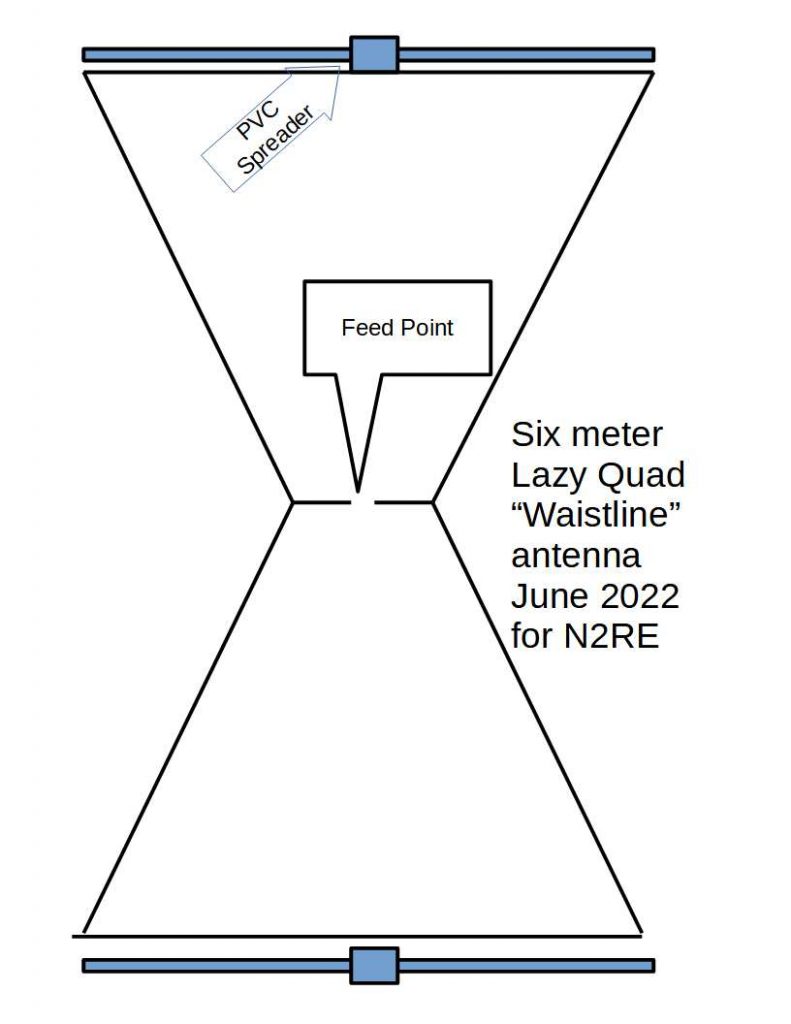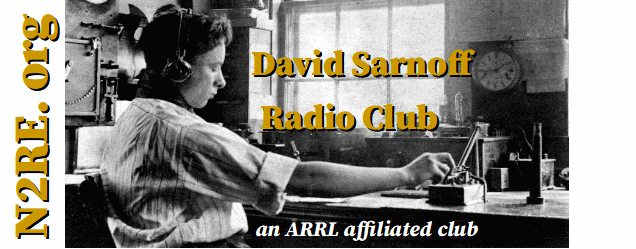This is a proposal for a simple 6 Meter antenna that can be hung from a high place. It is flat, horizontally polarized, and 6 feet wide by 12 feet high. It is based on a design called the “Lazy Quad” based on an earlier antenna called a “Lazy H” — though the principles of operation are completely different for the H and the Quad.
The antenna was designed using EZNEC and then 4NEC2. The second one was nice because one can specify variables to see how the pattern changes with, for example, height over ground.
Here’s a page showing the pattern at 50.5 MHz for the wire lengths below. Wire size is arbitrary, and will change in the actual implementation.
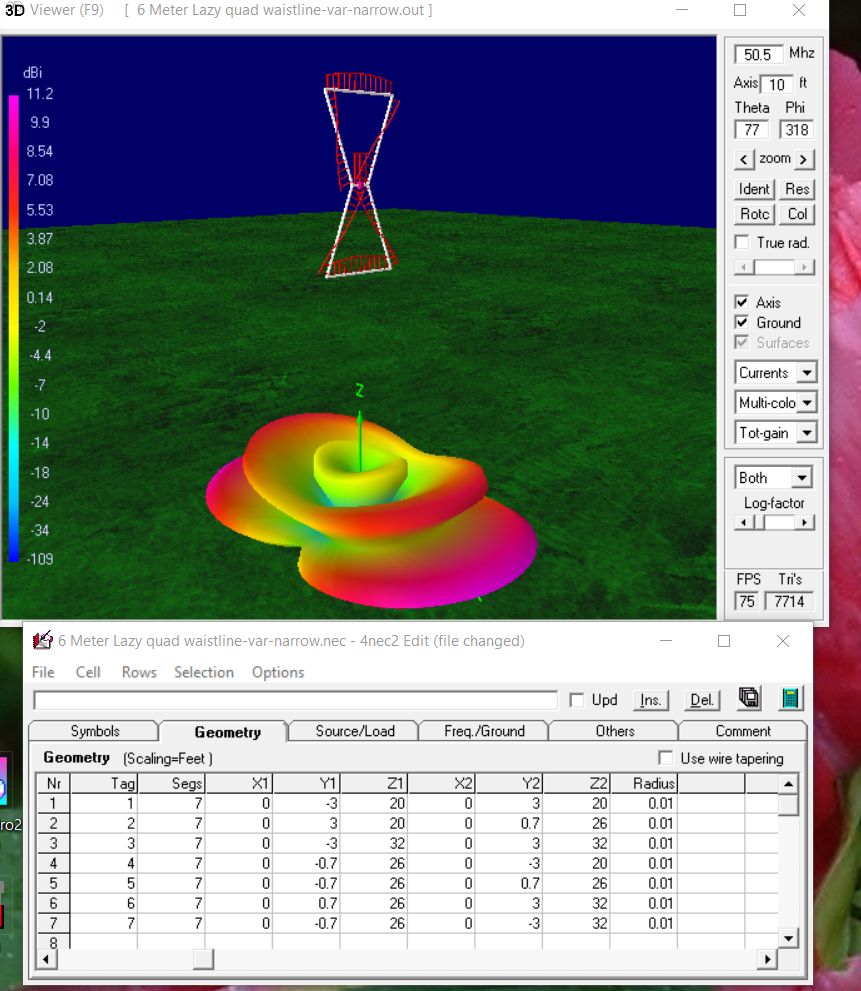
So the antenna has a shape that looks like a 1950’s dress– big shoulders, narrow waist, and big skirt. The antenna is fed at the belt buckle, balanced line, I guess. Notice that the pattern is very wide– ideally it should be omni-directional, but you can’t do that and be horizontally polarized! It has no front of back– so from NJ you can reach Maine and Mississippi at the same time.
So, if we believe 4NEC2, how does it work?
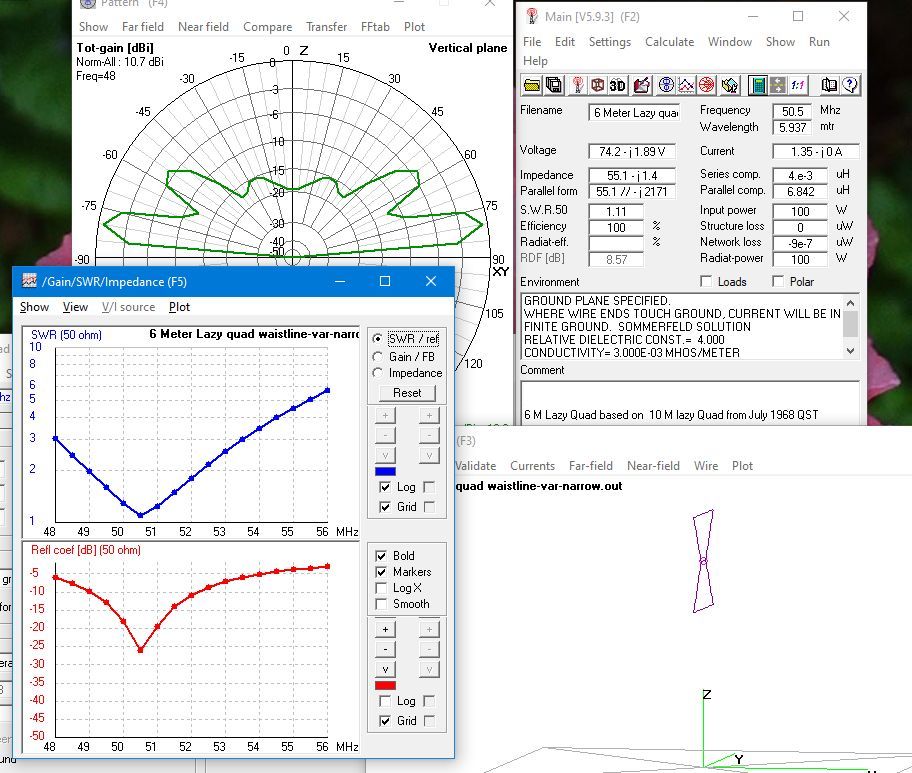
These are several windows from the design program 4NEC2… The SWR is below 3:1 from 48 to 53 MHz, and 55 Ohms at 50.5 The vertical pattern is, as advertised– when the base is 20 feet up and the top is 32 feet, most of the energy goes out at angles within 15 degrees of the horizon.
While it assumes balanced feed, we can use 50 ohm coax with a current balun right at the belt buckle.
Here’s the Smith Chart (from 48 MHz to 56 MHz):
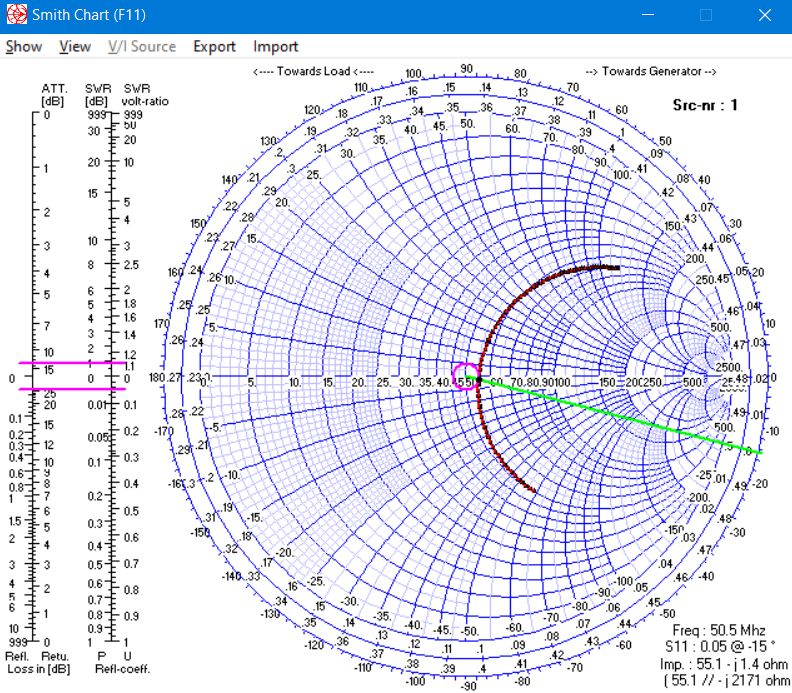
- Feedpoint 50 Ohms balanced (current balun)
- Width is 6 feet, possibly wire hung on PVC pipe
- Height is 12 feet, base is 20 feet up, feed 26 feet up, top 32 feet.
- Waistline is 1.4 feet — two segments of 0.7 feet (8.4″)
- Wire might be #12, with the waistline soldered to the middle of a big loop.
Tuning is still to be determined. I assume both loops resonate, and having a way to open each loop could allow us to tune one loop’s length, and then the other. Perhaps leaving the center top and bottom as cliplead or screw connections to a center to make an open circuit or adjust length – a bit of metal screwed into the PVC center (which could be a T to provide an offset from the mast.)
